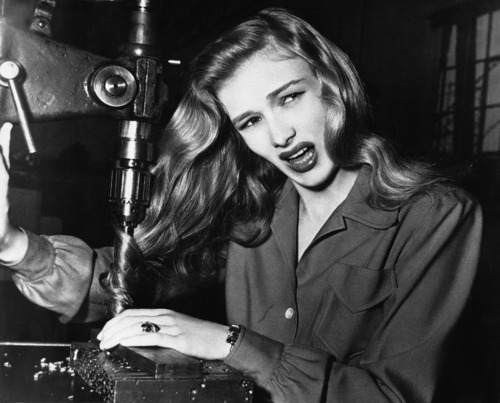Mirella Sichirollo Patzer's Blog, page 14
September 29, 2015
The Love Affair of Clark Gable and Loretta Young - All the Stars in the Heavens by Adriana Trigiani
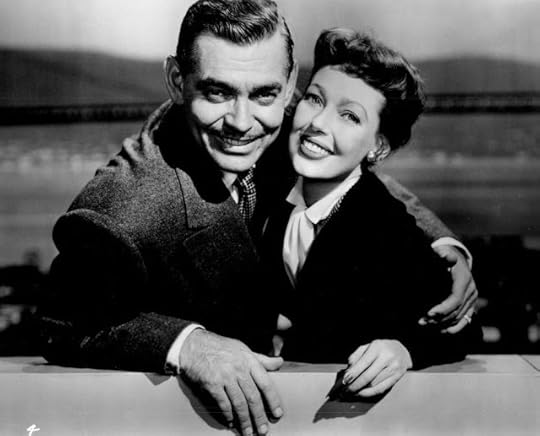
Clark Gable and Loretta Young
The year was 1935, the golden age in Hollywood, and the beautiful actress Loretta Young was one of the top box office starletts. By this time, Loretta had already starred in dozens of movies. But it was her next film, CALL OF THE WILD, which would have the greatest impact on her life. It was on the set that she met Clark Gable.
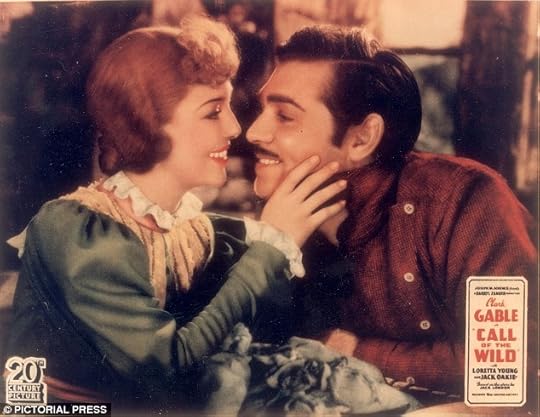
Loretta and Clark in Call of the WildAt the time, of the filming, Clark Gable was married to Maria "Ria" Franklin Prentiss Lucas Langham.
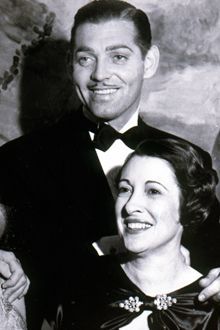
"Ria"
In 1998, for the first time, Loretta told the world about her relationship with Clark Gable and the secret love child she bore him. She said he had date raped her. Hollywood at the time had a strict code of conduct, a morality clause tightly built into each contact. Knowledge of her pregnancy by Gable would have resulted in a devastation of both of their careers. So Loretta kept her pregnancy a complete secret. Not an easy task when in the public eye. When the pregnancy began to show, and to have the child while keeping it hushed, she had to find an excuse for an extended absence. So covered in blankets, she gave an interview from her bed, citing her absence from movies was due to an illness she had suffered from since childhood. She told reporters that she would leave for Europe. In reality, however, she and her mother moved into a house they owned in Venice, California. It was there that she gave birth to Judith Young on November 6, 1935.
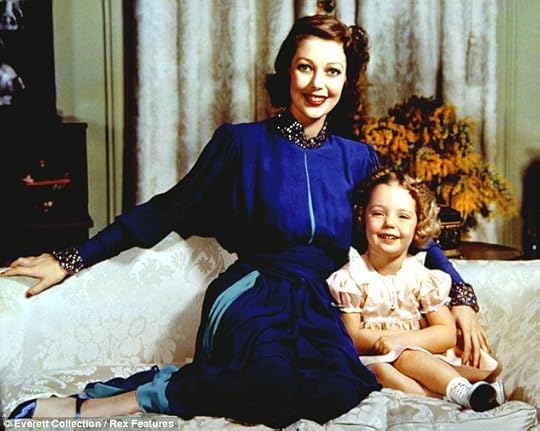
Loretta with JudithAfter only three weeks, Loretta left Judith at St. Elizabeth's, an orphanage outside Los Angeles under the care of nuns. She remained there until she was 19 months old and her mother officially proclaimed to the world that she was adopting a child. Not everyone in Hollywood was confinced and rumors flew. Young took great care never to confirm or deny any of the rumors. Thus her secret remained a scret. That is, until 1999 when Loretta authorized an autobiography of her life and revealed the truth to the writer, Joan Wester Anderson. She confessed that Judy was her biological child and the product of Young having had a brief affair with Gable. Below is a clip of Judith's revelations about her past.
Best selling author Adriana Trigiani has creatively reimagined the relationship between Loretta and Clark in a spectacular novel entitled ALL THE STARS IN THE HEAVENS. Opening Sentences: A cold gust of wind sounded like a faraway train whistle as it blew through South Bend that morning. Winter had arrived early in Indiana, in the middle of October beneath a cloudless sky. There was proof of it everywhere.
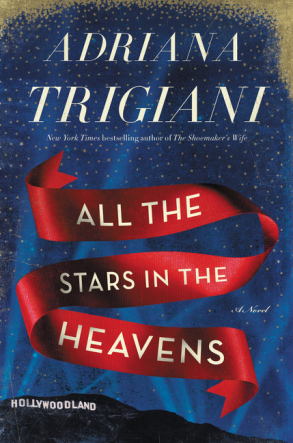 Synopsis: Adriana Trigiani, the New York Times bestselling author of the blockbuster epic The Shoemaker's Wife, returns with her biggest and boldest novel yet, a hypnotic tale based on a true story and filled with her signature elements: family ties, artistry, romance, and adventure. Born in the golden age of Hollywood, All the Stars in the Heavens captures the luster, drama, power, and secrets that could only thrive in the studio system—viewed through the lives of an unforgettable cast of players creating magic on the screen and behind the scenes.In this spectacular saga as radiant, thrilling, and beguiling as Hollywood itself, Adriana Trigiani takes us back to Tinsel Town's golden age—an era as brutal as it was resplendent—and into the complex and glamorous world of a young actress hungry for fame and success. With meticulous, beautiful detail, Trigiani paints a rich, historical landscape of 1930s Los Angeles, where European and American artisans flocked to pursue the ultimate dream: to tell stories on the silver screen.The movie business is booming in 1935 when twenty-one-year-old Loretta Young meets thirty-four-year-old Clark Gable on the set of The Call of the Wild. Though he's already married, Gable falls for the stunning and vivacious young actress instantly.Far from the glittering lights of Hollywood, Sister Alda Ducci has been forced to leave her convent and begin a new journey that leads her to Loretta. Becoming Miss Young's secretary, the innocent and pious young Alda must navigate the wild terrain of Hollywood with fierce determination and a moral code that derives from her Italian roots. Over the course of decades, she and Loretta encounter scandal and adventure, choose love and passion, and forge an enduring bond of love and loyalty that will be put to the test when they eventually face the greatest obstacle of their lives.Anchored by Trigiani's masterful storytelling that takes you on a worldwide ride of adventure from Hollywood to the shores of southern Italy, this mesmerizing epic is, at its heart, a luminous tale of the most cherished ties that bind. Brimming with larger-than-life characters both real and fictional—including stars Spencer Tracy, Myrna Loy, David Niven, Hattie McDaniel and more—it is it is the unforgettable story of one of cinema's greatest love affairs during the golden age of American movie making.
Synopsis: Adriana Trigiani, the New York Times bestselling author of the blockbuster epic The Shoemaker's Wife, returns with her biggest and boldest novel yet, a hypnotic tale based on a true story and filled with her signature elements: family ties, artistry, romance, and adventure. Born in the golden age of Hollywood, All the Stars in the Heavens captures the luster, drama, power, and secrets that could only thrive in the studio system—viewed through the lives of an unforgettable cast of players creating magic on the screen and behind the scenes.In this spectacular saga as radiant, thrilling, and beguiling as Hollywood itself, Adriana Trigiani takes us back to Tinsel Town's golden age—an era as brutal as it was resplendent—and into the complex and glamorous world of a young actress hungry for fame and success. With meticulous, beautiful detail, Trigiani paints a rich, historical landscape of 1930s Los Angeles, where European and American artisans flocked to pursue the ultimate dream: to tell stories on the silver screen.The movie business is booming in 1935 when twenty-one-year-old Loretta Young meets thirty-four-year-old Clark Gable on the set of The Call of the Wild. Though he's already married, Gable falls for the stunning and vivacious young actress instantly.Far from the glittering lights of Hollywood, Sister Alda Ducci has been forced to leave her convent and begin a new journey that leads her to Loretta. Becoming Miss Young's secretary, the innocent and pious young Alda must navigate the wild terrain of Hollywood with fierce determination and a moral code that derives from her Italian roots. Over the course of decades, she and Loretta encounter scandal and adventure, choose love and passion, and forge an enduring bond of love and loyalty that will be put to the test when they eventually face the greatest obstacle of their lives.Anchored by Trigiani's masterful storytelling that takes you on a worldwide ride of adventure from Hollywood to the shores of southern Italy, this mesmerizing epic is, at its heart, a luminous tale of the most cherished ties that bind. Brimming with larger-than-life characters both real and fictional—including stars Spencer Tracy, Myrna Loy, David Niven, Hattie McDaniel and more—it is it is the unforgettable story of one of cinema's greatest love affairs during the golden age of American movie making.ReviewbyMirella PatzerHistory and Women
All the Stars in Heaven is a rich novel that sweeps the reader into the golden age of Hollywood. Numerous famous actors and actresses make an appearance in this tale. Young is a young actress who falls in love with Spencer Tracy. Among the famous personages is a young nun by the name of Alda who has her own tale to tell which is interwoven between the pages.
The novel is on the longer side at approximately 450 pages, but well worth read. It is a well written tale with plenty of historical detail that is colored with the author's interpretation of Loretta Young's relationships. I could not help but fall in love with Clark Gable. Adriana writes him just as I imagined, a lovable, handsome rogue with plenty of humor and spirit, a womanizer, but one who is higly adorable. I fell in love with Clark Gable through and through. I was glad I read the book on my iPad Kindle app because I kept stopping to query photos of the people and places mentioned in the book. It helped cement the story in my mind while lending it a whole bunch of credence.
There is a ton to like about this story. Never rushed, but vivid, I adored the story very much, even though I experienced a bit of sadness that Clark and Loretta were never meant to be. A very good novel to savor! This is the first time I've read a book by Adriana Trigiani, but I plan to read a bit more of her work. I defintely enjoyed her style of writing. 4.5 stars out of 5!
Amazon USA Amazon Canada Amazon UK










Published on September 29, 2015 16:29
September 23, 2015
Wedding Gowns Thriough the Ages
From corseted waists in azure to gleaming white chiffon that fans out in a flouncing skirt, wedding gowns have undergone a series of makeovers in the last 150 years. While Queen Victoria’s wedding gown in 1840 – a grand affair of white satin and handmade Honiton lace – codified a trend that is still cherished and followed, wedding gowns in the mid and late 1800’s were modest but colorful affairs with little in the way of resemblance to the modern wedding gown. How did the journey from these colorful, high-collared outfits to today’s mermaid-style chiffon wedding dresses come about?
We trace the history of wedding gowns through the ages, from the 1900’s to the present day, with all their socioeconomic stories and glories.
The Early 1900’s
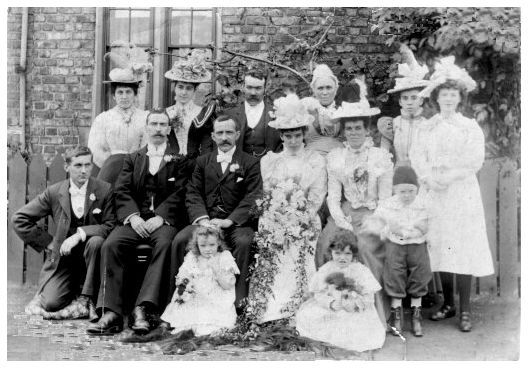
Between 1900 and 1920, the average wedding gown was characterized by the notorious S-shaped corset. Famous for restricting breathing and movement, the corset was designed to give women what was then viewed as an ideal feminine figure – it drew in the stomach and pushed out the bosom to emphasize a small waist. Gigot sleeves, high collars, long gloves, hats and plentiful frills were in fashion, contributing to an overall ‘covered’ look. While Queen Victoria’s wedding gown from 1840 remained an influence, driving the elite’s choice to opt for white satin wedding gowns – a departure from the masses’ colorful wedding dresses – effective bleaching techniques had not yet been developed, making white a hard colour to achieve and maintain for the average woman. Hence, the customary wedding gown could be one of many colors; gold, mauve, pale pink and deep blue dominated the stage.
The 20’s
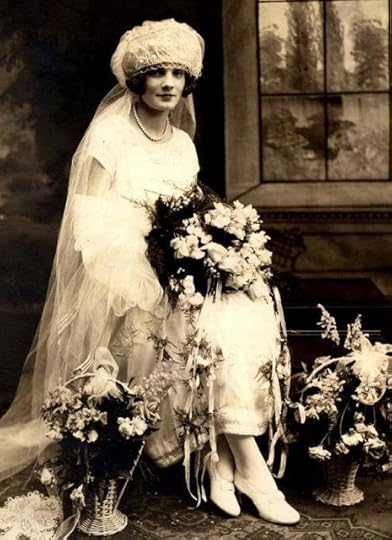
The Roaring Twenties ushered into life a new era for women: young women began to go to jazz clubs, smoke cigarettes and date men. The newfound freedom of this era was reflected in the typical 20’s wedding gown, which forwent the restricting corset to feature a flowing, streamlined silhouette. Necklines dropped, with oversized bouquets, Juliet headdresses and flapper cloche hats complimenting the loose-fit wedding gowns that had taken hold.
The 30’s and 40’s
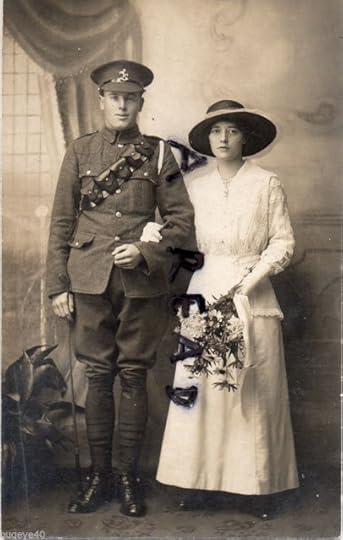
The 30’s and 40’s were a time of strife and struggle – the Great Depression ended in 1939, the same year the Second World War began. Yet it was also a time where the loveliness of romance reached dazzling, dizzying, dumbfounding heights, the likes of which the world would never see again. Pursued by a depression that crippled entire households, and thrust into a war that took the lives of millions, men and women rushed to the altar, tying knots before they were taken apart by the cruelty of the era, and seeking comfort in companionship they knew might not last. “Weddings nowadays hang not on the bridge’s whim, but on the decisions of the groom’s commanding officer,” wrote Vogue in 1942. “The 1942 schedule may run something like this: engagement announcement on Monday, invitations sent out by telegraph on Wednesday, the last handful of rice and rose petals flung on Saturday”
The wedding gowns of this time reflect the struggle, beauty, perseverance, and heartbreak of this period. The dresses were often made from rayon, rather than silk – a cloth much harder to afford during this difficult time. While the affluent preferred silver-patterned gowns with padded hips, easy-to-stitch rounded shoulders and gathered sleeves were prominent among the masses. While white dominated, many other colors were also visible. Practical hats replaced traditional headdresses in the 1930’s, and simple veils took root in the 40’s. Wedding rings became a staple – a symbol and reminder of love, through the separation and hardships of war. Due to the rushed nature of most war weddings, wedding gowns in the 40’s were also much shorter in length than the elaborate, floor-touching styles of previous eras. In fact, as the war progressed, the dominant daytime silhouette became short skirts, with layers of lace on top, a style of 1942 version of Vogue claimed to reflect “the practical needs of the wartime woman.”
The 50’s
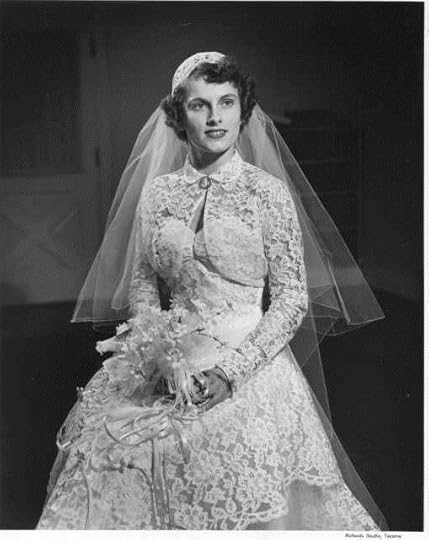
The 50’s were when families began to re-build in the haunting wake of the war. Much had changed, including the world’s perception of what women could and could not do. The result was that wedding gowns became much more liberal and modern. Shorter hemlines, shorter veils and shorter hairstyles were in. Gowns were often ballerina-length, with the long seams and multiple panels of princess-like skirts making wedding dresses a closer fit to the figure. Lace, satin and tulle were widely used. Elizabeth Taylor and Grace Kelley popularized the sweetheart neckline, a daring new style that post-war women were happy to experiment with. These sweetheart gowns were often reused later, as strapless dresses.
The 60’s and 70’s
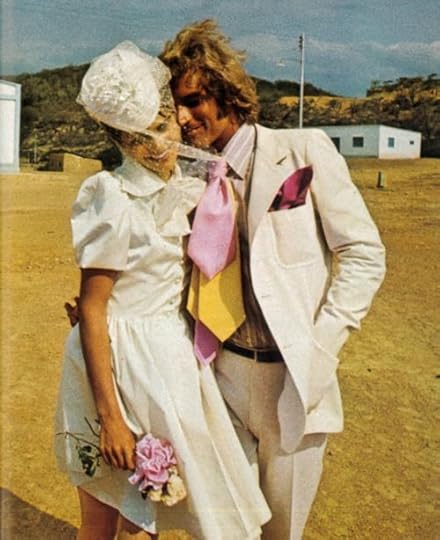
There is no doubt that the 60’s was an era that bridged the orthodox and modern. The empire waist became popular, with wedding gown bodices fitting just below the waist to unfurl into beautiful gathered skirts that skimmed the body, without the support of voluminous petticoats. Pill-box hats became a staple, with veils fanning out in circles around the hair and face.
In the wake of the changes brought by the war, and amplified over the next two decades, the world was a much more different place by the 1970’s. This was the decade of rebellion, so to speak, with wedding gowns defying any one particular trend – free thinkers, hippies and new-age spiritualists all played a role in bringing about a period that saw gowns range from hippie-style frocks and pantsuits, to miniskirts and flowing white silk dresses.
The 1980’s
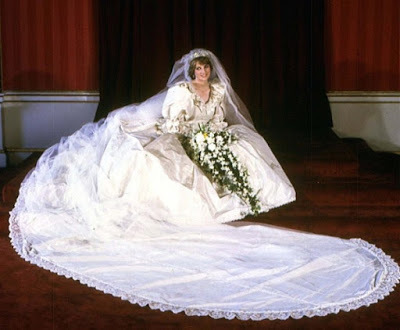
This was Lady Diana’s decade – the iconic Diana Spencer married Prince Charles of Wales in 1981, revealing to the world an enormous, white silk taffeta and lace gown with a 25-foot train, a dress that defined the tone for decades of wedding dresses to follow. No surprise, then, that everything about 80’s bride’s was styled ‘big’ – the hair, the veils, the skirts and sleeves and bouquets. Diana’s wedding gown and accessories set what was considered a gold standard in the industry in the years to come, writes Lynnell Nixon-Knight in his book, Natural Evolution. Large puffed sleeves, full skirts with cinched waists, cathedral trains, antique lace and full-length veils became wedding gown staples. White was the colour of this era.
The 1990’s
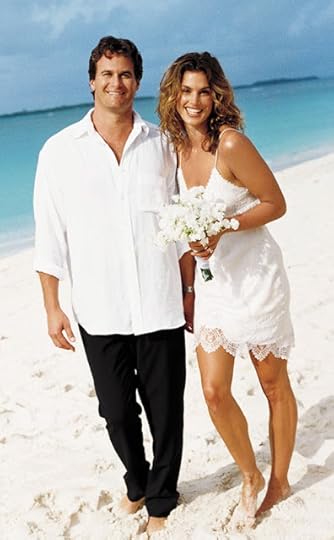
The 90’s saw the influence of pop culture become larger-than-life. Inspired by the internationalization and spread of the music industry and Hollywood, women began to move away from traditional styles, towards ‘sexier’ wedding gowns. This era was also marked by a more minimalistic approach towards the gowns: gone were the massive headdresses, puffed sleeves and enormous dresses, as women shifted to slimmer, shorter, and more subtle.
The 2000’s

The 21st century saw a complete overhaul of the wedding gown landscape. Building on the momentum of the less-traditional styles that arose in the 1990’s, the 2000’s saw brides go wild with wedding gowns! Destination wedding and themed events became common and, with them, the matching of your wedding gown to your personality, rather than to predefined norms and conventions.
Strapless and off-the-shoulder styles became popular. Pickup skirts made a splash in the mid-2000s, and frothy skirts with tightly-fitted bodices followed. Brides began to experiment with multiple styles, from romantic bohemian maxi dresses for a 70’s-inspired hippie themed ceremony, to vibrant slit-style skirts suited for an outdoor wedding. Wedding gowns began to incorporate multiple colors once again, although the white gown remained a favorite. More than anything else, curve-hugging gowns gained mainstream acceptance –the mermaid style became a highly-requested wedding dress option.
Where does this leave us?
From Queen Victoria’s lace-popularizing choice in the 1840’s to Princess Diana’s closely-guarded silk secret in the 1980’s, wedding gown styles in 2015 are a synthesis of the glorious and intricate history of wedding dresses through the ages. Today’s wedding gowns are too diverse to be pinned down, symbolic of each bride’s unique beliefs, aspirations and desires in a way that no other dresses in women’s history have been. Twenty or thirty years from now, a systematic look at the wedding gowns of this period may very well offer deep insights into the liberation and empowerment of the common woman.
Author Bio
Kashaf Ali is a passionate fashion blogger who loves to write on prevailing trends. She is featured author at various blogs around and a staff writer at AnythingChenille.com, your premier source for all your custom chenille and letterman jacket patches.










We trace the history of wedding gowns through the ages, from the 1900’s to the present day, with all their socioeconomic stories and glories.
The Early 1900’s

Between 1900 and 1920, the average wedding gown was characterized by the notorious S-shaped corset. Famous for restricting breathing and movement, the corset was designed to give women what was then viewed as an ideal feminine figure – it drew in the stomach and pushed out the bosom to emphasize a small waist. Gigot sleeves, high collars, long gloves, hats and plentiful frills were in fashion, contributing to an overall ‘covered’ look. While Queen Victoria’s wedding gown from 1840 remained an influence, driving the elite’s choice to opt for white satin wedding gowns – a departure from the masses’ colorful wedding dresses – effective bleaching techniques had not yet been developed, making white a hard colour to achieve and maintain for the average woman. Hence, the customary wedding gown could be one of many colors; gold, mauve, pale pink and deep blue dominated the stage.
The 20’s

The Roaring Twenties ushered into life a new era for women: young women began to go to jazz clubs, smoke cigarettes and date men. The newfound freedom of this era was reflected in the typical 20’s wedding gown, which forwent the restricting corset to feature a flowing, streamlined silhouette. Necklines dropped, with oversized bouquets, Juliet headdresses and flapper cloche hats complimenting the loose-fit wedding gowns that had taken hold.
The 30’s and 40’s

The 30’s and 40’s were a time of strife and struggle – the Great Depression ended in 1939, the same year the Second World War began. Yet it was also a time where the loveliness of romance reached dazzling, dizzying, dumbfounding heights, the likes of which the world would never see again. Pursued by a depression that crippled entire households, and thrust into a war that took the lives of millions, men and women rushed to the altar, tying knots before they were taken apart by the cruelty of the era, and seeking comfort in companionship they knew might not last. “Weddings nowadays hang not on the bridge’s whim, but on the decisions of the groom’s commanding officer,” wrote Vogue in 1942. “The 1942 schedule may run something like this: engagement announcement on Monday, invitations sent out by telegraph on Wednesday, the last handful of rice and rose petals flung on Saturday”
The wedding gowns of this time reflect the struggle, beauty, perseverance, and heartbreak of this period. The dresses were often made from rayon, rather than silk – a cloth much harder to afford during this difficult time. While the affluent preferred silver-patterned gowns with padded hips, easy-to-stitch rounded shoulders and gathered sleeves were prominent among the masses. While white dominated, many other colors were also visible. Practical hats replaced traditional headdresses in the 1930’s, and simple veils took root in the 40’s. Wedding rings became a staple – a symbol and reminder of love, through the separation and hardships of war. Due to the rushed nature of most war weddings, wedding gowns in the 40’s were also much shorter in length than the elaborate, floor-touching styles of previous eras. In fact, as the war progressed, the dominant daytime silhouette became short skirts, with layers of lace on top, a style of 1942 version of Vogue claimed to reflect “the practical needs of the wartime woman.”
The 50’s

The 50’s were when families began to re-build in the haunting wake of the war. Much had changed, including the world’s perception of what women could and could not do. The result was that wedding gowns became much more liberal and modern. Shorter hemlines, shorter veils and shorter hairstyles were in. Gowns were often ballerina-length, with the long seams and multiple panels of princess-like skirts making wedding dresses a closer fit to the figure. Lace, satin and tulle were widely used. Elizabeth Taylor and Grace Kelley popularized the sweetheart neckline, a daring new style that post-war women were happy to experiment with. These sweetheart gowns were often reused later, as strapless dresses.
The 60’s and 70’s

There is no doubt that the 60’s was an era that bridged the orthodox and modern. The empire waist became popular, with wedding gown bodices fitting just below the waist to unfurl into beautiful gathered skirts that skimmed the body, without the support of voluminous petticoats. Pill-box hats became a staple, with veils fanning out in circles around the hair and face.
In the wake of the changes brought by the war, and amplified over the next two decades, the world was a much more different place by the 1970’s. This was the decade of rebellion, so to speak, with wedding gowns defying any one particular trend – free thinkers, hippies and new-age spiritualists all played a role in bringing about a period that saw gowns range from hippie-style frocks and pantsuits, to miniskirts and flowing white silk dresses.
The 1980’s

This was Lady Diana’s decade – the iconic Diana Spencer married Prince Charles of Wales in 1981, revealing to the world an enormous, white silk taffeta and lace gown with a 25-foot train, a dress that defined the tone for decades of wedding dresses to follow. No surprise, then, that everything about 80’s bride’s was styled ‘big’ – the hair, the veils, the skirts and sleeves and bouquets. Diana’s wedding gown and accessories set what was considered a gold standard in the industry in the years to come, writes Lynnell Nixon-Knight in his book, Natural Evolution. Large puffed sleeves, full skirts with cinched waists, cathedral trains, antique lace and full-length veils became wedding gown staples. White was the colour of this era.
The 1990’s

The 90’s saw the influence of pop culture become larger-than-life. Inspired by the internationalization and spread of the music industry and Hollywood, women began to move away from traditional styles, towards ‘sexier’ wedding gowns. This era was also marked by a more minimalistic approach towards the gowns: gone were the massive headdresses, puffed sleeves and enormous dresses, as women shifted to slimmer, shorter, and more subtle.
The 2000’s

The 21st century saw a complete overhaul of the wedding gown landscape. Building on the momentum of the less-traditional styles that arose in the 1990’s, the 2000’s saw brides go wild with wedding gowns! Destination wedding and themed events became common and, with them, the matching of your wedding gown to your personality, rather than to predefined norms and conventions.
Strapless and off-the-shoulder styles became popular. Pickup skirts made a splash in the mid-2000s, and frothy skirts with tightly-fitted bodices followed. Brides began to experiment with multiple styles, from romantic bohemian maxi dresses for a 70’s-inspired hippie themed ceremony, to vibrant slit-style skirts suited for an outdoor wedding. Wedding gowns began to incorporate multiple colors once again, although the white gown remained a favorite. More than anything else, curve-hugging gowns gained mainstream acceptance –the mermaid style became a highly-requested wedding dress option.
Where does this leave us?
From Queen Victoria’s lace-popularizing choice in the 1840’s to Princess Diana’s closely-guarded silk secret in the 1980’s, wedding gown styles in 2015 are a synthesis of the glorious and intricate history of wedding dresses through the ages. Today’s wedding gowns are too diverse to be pinned down, symbolic of each bride’s unique beliefs, aspirations and desires in a way that no other dresses in women’s history have been. Twenty or thirty years from now, a systematic look at the wedding gowns of this period may very well offer deep insights into the liberation and empowerment of the common woman.
Author Bio
Kashaf Ali is a passionate fashion blogger who loves to write on prevailing trends. She is featured author at various blogs around and a staff writer at AnythingChenille.com, your premier source for all your custom chenille and letterman jacket patches.










Published on September 23, 2015 08:34
September 6, 2015
Anna Maria Mancini - The Enchantress of Paris by Marci Jefferson
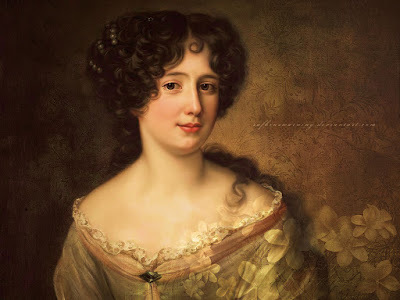
Anna Maria Mancini1639 - 1715
Anna Maria Mancini was a beautiful young Roman woman who captured the heart of the Sun King. Her father, Baron Lorenzo Mancini, a necromancer and astrologer had five daughters to marry off. But before he could arrange advantageous marriages for them, he died. The years was 1650 and the girls were all within marriageable age. His wife, Baroness Geronima Mazzarini, a Sicilian noblewomen, took her daughters to Paris, to the home of her brother, Cardinal Mazarin. There she hoped to use his influence to arrange their marriages.
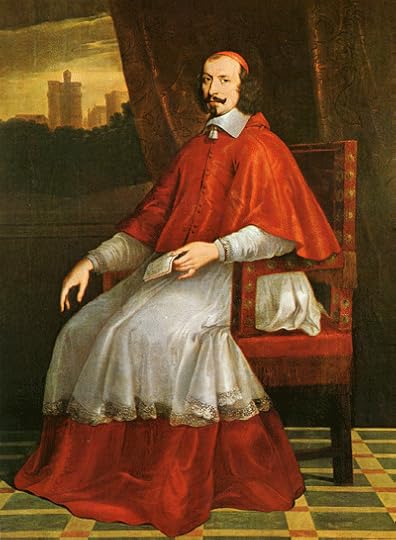
Cardinal Giulio Mazzarini
Their beauty caught the attention not only of dukes, princes, and kings. Of the five sisters, Anna Maria (her name became shortened to Marie) was perhaps the most beautiful with her dark hair and eyes and a charming personality. She captured the biggest prize of all - she won the heart of King Louis XIV The Sun King.
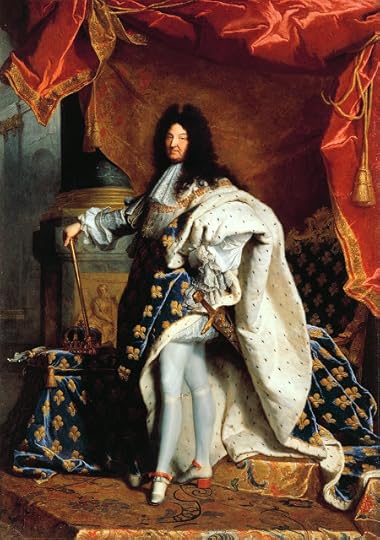
Sounds like a dream come true, right? Wrong!
Coming from a family of astrologers and necromancers, Geronima had Marie's horoscope cast. The results were not good. The forecast predicted that Marie would cause a great deal of trouble and would ultimately disgrace the family.
Ailing in health and now on her death bed, Geronima called her Cardinal brother to her bedside and made him promise that he would have Marie cloistered in a convent for the rest of her life. Let the machinations begin!
The good Cardinal loved his sister and would stop at nothing to see her last wish fulfilled. But to go up against a king is no easy feat. Louis desperately loved Marie, even though it was rumored that their love affair was only platonic. He pulled many stunts to keep Marie out of the Sun King's view. Despite all his attempts, their relationship continued to flourish. Finally, he solicited the help of Louis's mother, Anne of Austria, who wholeheartedly became his co-consipirator.
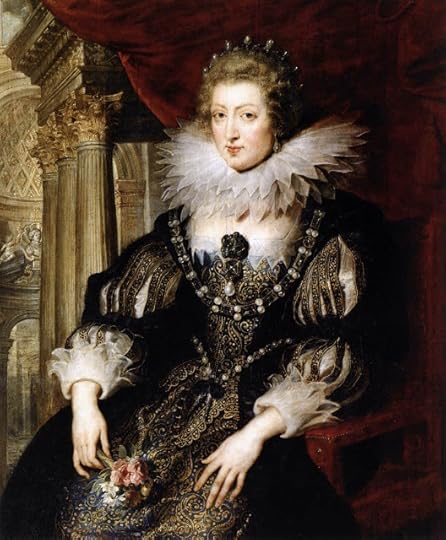
Anne of Austria1601 - 1666
Marie was banished from France and sent back to Rome Italy to marry the Italian prince, Lorenzo Onofrio Colonna who was duly surprised to learn his bride was still a virgin.
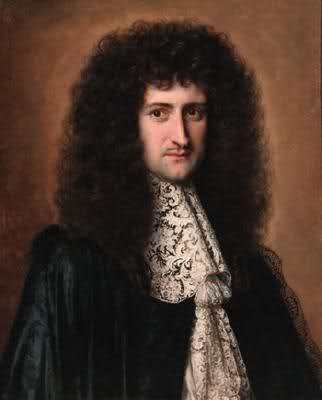
Lorenzo Onofrio Colonna1637 - 1689
Meanwhile, Louis was swiftly married off to Maria Theresa of Spain.
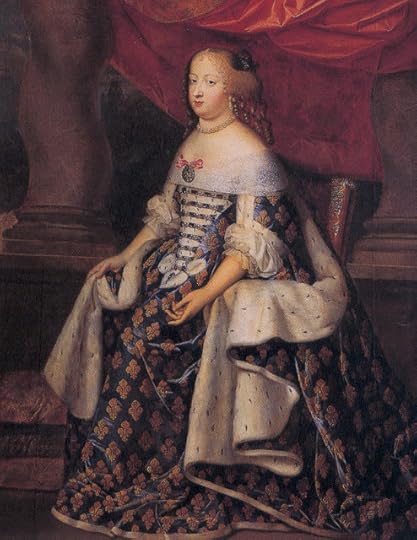
Maria Theresa1638 - 1683
In Italy, Marie presented her husband with three sons. Not long after the birth of her last son, Marie's marriage to Lorenzo broke down and turned violent. Fearing for her life, she escaped from Rome accompanied by her sister Hortense, whose own marriage had also failed miserably due to her very wealthy husband's stinginess and extreme jealousy.
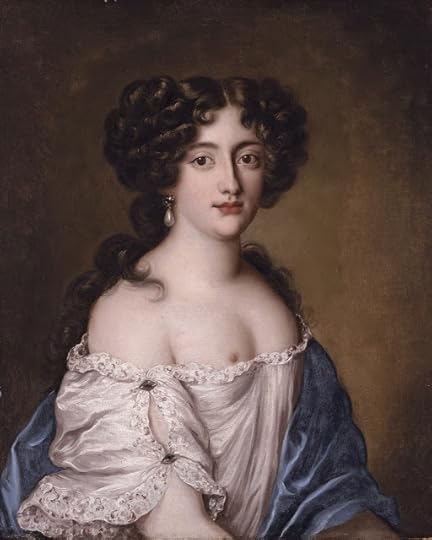
Hortense Mancini1646 - 1699
Together with her wild sister, Hortense, Marie cavorted throughout Europe. Short of money, she supported herself by writing her memoirs which were a huge hit. Only when her husband died did she return to Italy.
Marie Mancini's life has been captured in the latest novel about her life:
THE ENCHANTRESS OF PARISby
Marci Jefferson
Opening Paragraph: Footmen threw open the front doors of my casa, my sanctum of peaceful exile in madrid for near a decade, and a whiff of spices and the gleam of moonlight filled my front hall. Olympia brushed in, tall and fashionable as ever in black French silks and familiar diamonds, looking only half of her forty years. though she had come to Madrid for her own exile three years earlier, I had not seen my older sister since her arrival visit. She took one look at my Spanish garb and frowned her disdainful courtier's frown. "Really, Marie, hyave you lost all sense of style?"
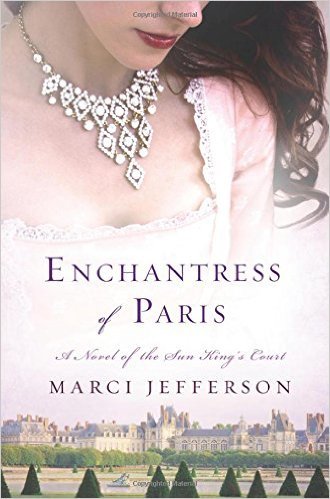 Back Cover Blurb:
Back Cover Blurb:Fraught with conspiracy and passion, the Sun King's opulent court is brought to vivid life in this captivating tale about a woman whose love was more powerful than magic.The alignment of the stars at Marie Mancini's birth warned that although she would be gifted at divination, she was destined to disgrace her family. Ignoring the dark warnings of his sister and astrologers, Cardinal Mazarin brings his niece to the French court, where the forbidden occult arts thrive in secret. In France, Marie learns her uncle has become the power behind the throne by using her sister Olympia to hold the Sun King, Louis XIV, in thrall.Desperate to avoid her mother's dying wish that she spend her life in a convent, Marie burns her grimoire, trading Italian superstitions for polite sophistication. But as her star rises, King Louis becomes enchanted by Marie's charm. Sensing a chance to grasp even greater glory, Cardinal Mazarin pits the sisters against each other, showering Marie with diamonds and silks in exchange for bending King Louis to his will.Disgusted by Mazarin's ruthlessness, Marie rebels. She sacrifices everything, but exposing Mazarin's deepest secret threatens to tear France apart. When even King Louis's love fails to protect Marie, she must summon her forbidden powers of divination to shield her family, protect France, and help the Sun King fulfill his destiny.
Review by Mirella Patzer
This fictional account of the life of Marie Mancini is a definite 5 star read! It kept me engaged from first page to last. I adored the love letters between Marie and King Louis that author Marci Jefferson recreated. Everything about this story was well done--from the historical details to the characters to the oppulence of the French Court! Utterly compelling. I love a good villain, and the Cardinal fit the bill. Duplicitous, sneaky, mean, and conniving, he never failed to keep me entertained.
Well crafted, nicely researched, and vibrant with detail of the 17th century French court, this was one book that I devoured in two sittings. Definitely highly recommended. One of my favourite books for 2015.
Amazon USA Amazon Canada Amazon UK










Published on September 06, 2015 11:49
September 5, 2015
Hoyden of the Week - Mistaken hair curler
Published on September 05, 2015 17:46
August 31, 2015
Vintage Beauty
Published on August 31, 2015 15:01
August 4, 2015
The Most Prolific Killer in History - The Blood Countess - Elizabeth Bathory (1569 - 1614)
In her lifetime, Elizabeth Bathory became infamous as the "Bloody Countess". Obsessed with retaining her young, Elizabeth was convinced that bathing in blood was the way to achieve eternal youth. To keep herself stocked in blood, she tortured, murdered, and drank the blood of literally hundreds of innocent young women.
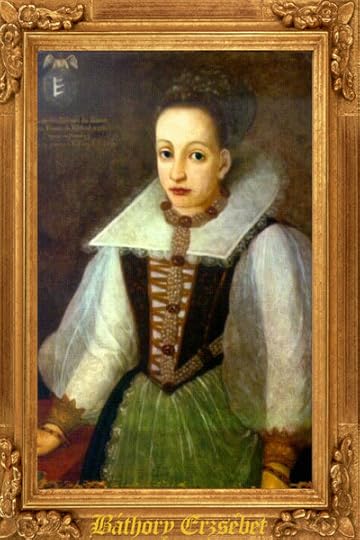
Countess Elizabeth Bathory
August 7, 1560 – August 21, 1614
She was born in the year 1560, into very wealthy noble family of kings, politicians, and clerics. But not all was what it seemed within her family circle, for they dabbled in black magic, satanism, and sexual escapades. And Elizabeth was exposed to all of it. Beautiful, vain, self-centered, and of such high rank, she was betrothed when she was 11 and married to Count Ferenc Nádasdy, The Black Hero of Hungary, a famous count, when she was 15.
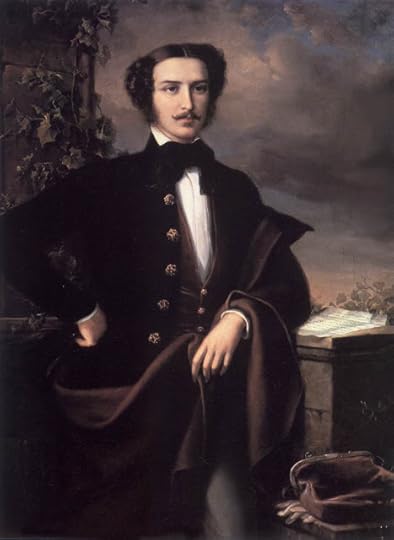
Count Ferenc Nádasdy
The couple moved to their new home nestled deep in the Carpathian Mountains. Their castle was surrounded by rich farmlands worked by superstitious peasants and a tiny village.
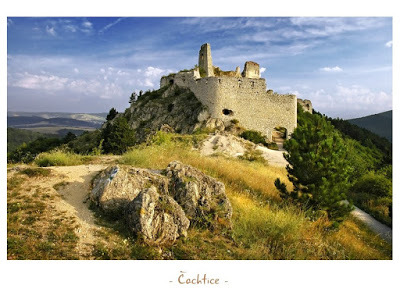
Being married to a war hero had its disadvantages. She found herself mostly alone except for brief interludes when the count would return home long enough to attempt to impregnate her. Despite her four children, Elizabeth was bored and left to entertain herself. Left to her own devices, her penchant for cruelty and her horrendous temper soon veered its ugly head. Vassals and villagers were terrified of her. To relieve her boredom she took on numerous lovers, even one believed to be a vampire. Her love was pale, thin, and had sharp teeth. One day, he vanished, without an explanation, never to be found. This fueled gossip and the people became even more fearful of her. They lived in fear of making her angry or inadvertently drawing her attention. Stories of how she beat and tortured her female servants with devices she found hidden deep in the bowels of her husband's castle. She surrounded herself with those most loyal, her beloved childhood nurse, and those who practiced witchcraft of which she became a most avid pupil.
Above everything, Elizabeth valued her beuaty. Giving birth to 4 children and finding herself in her middle to late twenties, she realized her beauty was fading. Her temper became sharper, quicker, more unpredictable. She took it out on her servants, punishing them, torturing them with the devices in her dungeon. Everyone was too terrified to speak out on behalf of Elizabeth's victims for fear of reprisal.
In the year 1600, when she was in her early 40's, her husband died. Elizabeth was sole mistress of the estate, including surrounding lands and villages. Eager to be free, she got rid of her children by sending them to nearby relatives to look after. This is when her taste for blood came to life. Desperate to hang on to her youth, she searched for an answer because all other dark rituals and potions she had attempted failed miserably.
Then one day, when a new maid angered her, she struck the young woman in the face. Blood spurted from the poor woman's nose, splashing onto Elizabeth's hand and dress. Elizabeth wiped it away, and when she did, she was certain the flesh beneath the blood was more vibrant, softer. An idea was born and she ordered one of her male servants to execute the maid and drain her blood into a tub so that she could submerge herself in it.
An obsessions was born. Before long, her accomplices set to work and a long line of unmarried virgins were offered good paying positions to work for Elizabeth. And thus they came to the castle, but not to work in the upper chambers like promised, but forced into the torture chamber in the dark dungeon. he dark Under Elizabeth's direction, her accomplices used the most gruesome methods to extract their blood. When their bodies were drained of blood, they were secreted away in the dead of night for burial.
Soon it became more difficult to acquire virgins. Desperate, Elizabeth and her aides had to come up with another clever plan to fool potential victims. Under the pretense of hiring a governess to tutor her children, she soon resumed her murderous ways.
Things were not that easy, however, for when poor village or peasant girls went missing, no one dared ask too many questions. But when young women of higher rank went missing, a cacaphony of suspicions arose. Elizabeth had grown careless. Instead of burying her victims, she simply allowed her henchmen to leave them out for the wolves. Soon, the authorities began to suspect something untoward was happening behind her castle's walls. The remains of one or more girls was discovered. Rumors swirled anew and the suspicons were brought to the king. He ordered an investigation, headed up by a close relative of Elizabeth's. .
On a cold night in December 1610, he and his men rode to Elizabeth's castle. Upon their arrival, they were met with a grisly scene - almost a dozen dead or dying young women, all of them horrifically tortured. A search revealed even more bodies strewn about. They immediately arrested Elizabeth and her henchmen and brought them to trial. All but one were found guilty and executed, many in a way as gruesome as those their victims faced.
But Elizabeth escaped that fate. Under Hungarian law at the time, a citizen of noble birth could not be brought to trial or executed. Determined to hold Elizabeth accountable for the murder of over 600 young women, the government passed a law that allowed her to be sealed alive in a room in her castle. The only contact she was allowed was from her guards who passed food to her through a narrow slot in the thick, locked door.
Four years later, one of those guards discovered her dead on the floor. Elizabeth was 54 years old. During her incarceration, she refused to speak about her atrocious crimes, and showed no remorse.
Many authors have written about Elizabeth's life, the most recent is Andrei Codrescu.
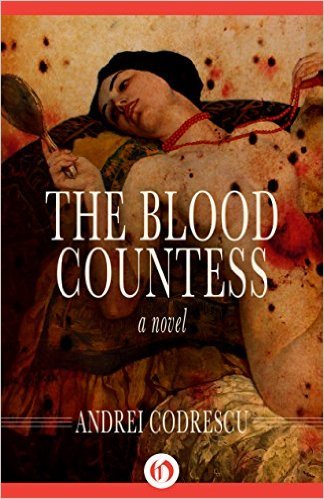
Synopsis:
A Hungarian-American journalist confronts the beauty and terror of his aristocratic heritage in this suspenseful chronicle of murder and eroticism. Turmoil reigns in post-Soviet Hungary when journalist Drake Bathory-Kereshtur returns from America to grapple with his family history. He’s haunted by the legacy of his ancestor, the notorious sixteenth-century Countess Elizabeth Bathory, who is said to have murdered more than 650 young virgins and bathed in their blood to preserve her youth. Interweaving past and present, The Blood Countess tells the stories of Elizabeth’s debauched and murderous reign and Drake’s fascination with the eternal clashes of faith and power, violence and beauty. Codrescu traces the captivating origins of the countess’s obsessions in tandem with the emerging political fervor of the reporter, building the narratives into an unforgettable, bloody crescendo. Taut and intense, The Blood Countess is a riveting novel that deftly straddles the genres of historical fiction, thriller, horror, and family drama.
Review by Mirella Patzer Also visit Historical Novel Review for more fascinating historical fiction books!
The author delved deep into the inner thoughts and motivations of Elizaveth Bathory, and in this he excelled. I much preferred to stay with Elizabeth's point of view rather than switching back to a modern day descendent. But that's because I'm a purist when it comes to historical fiction and I tend not to be fond of books set in both present and past times. Codrescue does not shy away from the brutality, superstitions, terror, and beliefs of the time including the animosity of the people towards the wealthy nobles. There is much violence in this book, and that must be expected. The murderous acts are chilling and graphic, so brace yourselves. Not for the feint of heart, that's for sure, but Elizabeth's story is all about the murders, and cannot be writtenw without it. The author did a ton of research and this is definitely one of the strengths of this book. The world continues to be fascinated with this notorious woman and this is one book that definitely portrays her accurately, giving readers a glimpse as to what evil lurcked in her mind and heart.
Amazon USA Amazon Canada
Part 1
Part 2
Part 3











Countess Elizabeth Bathory
August 7, 1560 – August 21, 1614
She was born in the year 1560, into very wealthy noble family of kings, politicians, and clerics. But not all was what it seemed within her family circle, for they dabbled in black magic, satanism, and sexual escapades. And Elizabeth was exposed to all of it. Beautiful, vain, self-centered, and of such high rank, she was betrothed when she was 11 and married to Count Ferenc Nádasdy, The Black Hero of Hungary, a famous count, when she was 15.

Count Ferenc Nádasdy
The couple moved to their new home nestled deep in the Carpathian Mountains. Their castle was surrounded by rich farmlands worked by superstitious peasants and a tiny village.

Being married to a war hero had its disadvantages. She found herself mostly alone except for brief interludes when the count would return home long enough to attempt to impregnate her. Despite her four children, Elizabeth was bored and left to entertain herself. Left to her own devices, her penchant for cruelty and her horrendous temper soon veered its ugly head. Vassals and villagers were terrified of her. To relieve her boredom she took on numerous lovers, even one believed to be a vampire. Her love was pale, thin, and had sharp teeth. One day, he vanished, without an explanation, never to be found. This fueled gossip and the people became even more fearful of her. They lived in fear of making her angry or inadvertently drawing her attention. Stories of how she beat and tortured her female servants with devices she found hidden deep in the bowels of her husband's castle. She surrounded herself with those most loyal, her beloved childhood nurse, and those who practiced witchcraft of which she became a most avid pupil.
Above everything, Elizabeth valued her beuaty. Giving birth to 4 children and finding herself in her middle to late twenties, she realized her beauty was fading. Her temper became sharper, quicker, more unpredictable. She took it out on her servants, punishing them, torturing them with the devices in her dungeon. Everyone was too terrified to speak out on behalf of Elizabeth's victims for fear of reprisal.
In the year 1600, when she was in her early 40's, her husband died. Elizabeth was sole mistress of the estate, including surrounding lands and villages. Eager to be free, she got rid of her children by sending them to nearby relatives to look after. This is when her taste for blood came to life. Desperate to hang on to her youth, she searched for an answer because all other dark rituals and potions she had attempted failed miserably.
Then one day, when a new maid angered her, she struck the young woman in the face. Blood spurted from the poor woman's nose, splashing onto Elizabeth's hand and dress. Elizabeth wiped it away, and when she did, she was certain the flesh beneath the blood was more vibrant, softer. An idea was born and she ordered one of her male servants to execute the maid and drain her blood into a tub so that she could submerge herself in it.
An obsessions was born. Before long, her accomplices set to work and a long line of unmarried virgins were offered good paying positions to work for Elizabeth. And thus they came to the castle, but not to work in the upper chambers like promised, but forced into the torture chamber in the dark dungeon. he dark Under Elizabeth's direction, her accomplices used the most gruesome methods to extract their blood. When their bodies were drained of blood, they were secreted away in the dead of night for burial.
Soon it became more difficult to acquire virgins. Desperate, Elizabeth and her aides had to come up with another clever plan to fool potential victims. Under the pretense of hiring a governess to tutor her children, she soon resumed her murderous ways.
Things were not that easy, however, for when poor village or peasant girls went missing, no one dared ask too many questions. But when young women of higher rank went missing, a cacaphony of suspicions arose. Elizabeth had grown careless. Instead of burying her victims, she simply allowed her henchmen to leave them out for the wolves. Soon, the authorities began to suspect something untoward was happening behind her castle's walls. The remains of one or more girls was discovered. Rumors swirled anew and the suspicons were brought to the king. He ordered an investigation, headed up by a close relative of Elizabeth's. .
On a cold night in December 1610, he and his men rode to Elizabeth's castle. Upon their arrival, they were met with a grisly scene - almost a dozen dead or dying young women, all of them horrifically tortured. A search revealed even more bodies strewn about. They immediately arrested Elizabeth and her henchmen and brought them to trial. All but one were found guilty and executed, many in a way as gruesome as those their victims faced.
But Elizabeth escaped that fate. Under Hungarian law at the time, a citizen of noble birth could not be brought to trial or executed. Determined to hold Elizabeth accountable for the murder of over 600 young women, the government passed a law that allowed her to be sealed alive in a room in her castle. The only contact she was allowed was from her guards who passed food to her through a narrow slot in the thick, locked door.
Four years later, one of those guards discovered her dead on the floor. Elizabeth was 54 years old. During her incarceration, she refused to speak about her atrocious crimes, and showed no remorse.
Many authors have written about Elizabeth's life, the most recent is Andrei Codrescu.

Synopsis:
A Hungarian-American journalist confronts the beauty and terror of his aristocratic heritage in this suspenseful chronicle of murder and eroticism. Turmoil reigns in post-Soviet Hungary when journalist Drake Bathory-Kereshtur returns from America to grapple with his family history. He’s haunted by the legacy of his ancestor, the notorious sixteenth-century Countess Elizabeth Bathory, who is said to have murdered more than 650 young virgins and bathed in their blood to preserve her youth. Interweaving past and present, The Blood Countess tells the stories of Elizabeth’s debauched and murderous reign and Drake’s fascination with the eternal clashes of faith and power, violence and beauty. Codrescu traces the captivating origins of the countess’s obsessions in tandem with the emerging political fervor of the reporter, building the narratives into an unforgettable, bloody crescendo. Taut and intense, The Blood Countess is a riveting novel that deftly straddles the genres of historical fiction, thriller, horror, and family drama.
Review by Mirella Patzer Also visit Historical Novel Review for more fascinating historical fiction books!
The author delved deep into the inner thoughts and motivations of Elizaveth Bathory, and in this he excelled. I much preferred to stay with Elizabeth's point of view rather than switching back to a modern day descendent. But that's because I'm a purist when it comes to historical fiction and I tend not to be fond of books set in both present and past times. Codrescue does not shy away from the brutality, superstitions, terror, and beliefs of the time including the animosity of the people towards the wealthy nobles. There is much violence in this book, and that must be expected. The murderous acts are chilling and graphic, so brace yourselves. Not for the feint of heart, that's for sure, but Elizabeth's story is all about the murders, and cannot be writtenw without it. The author did a ton of research and this is definitely one of the strengths of this book. The world continues to be fascinated with this notorious woman and this is one book that definitely portrays her accurately, giving readers a glimpse as to what evil lurcked in her mind and heart.
Amazon USA Amazon Canada
Part 1
Part 2
Part 3










Published on August 04, 2015 06:26
July 29, 2015
Women's Fiction - Among the Fair Magnolias by Harper Collins!
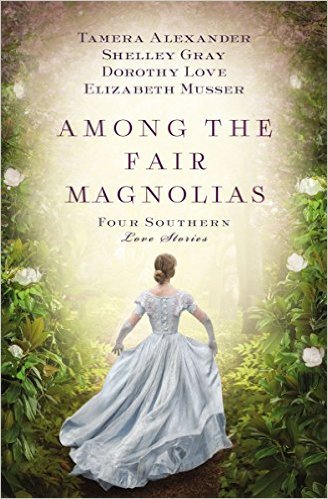 In the most turbulent decade of our nation's history, four Southern women--destinies forged by birth, hearts steeled by war--face near impossible choices on their journeys in life . . . and in love.
To Mend a Dream
by Tamera Alexander
Savannah Darby would do almost anything to revisit her family home. So when new owner, Aidan Bedford, a Boston attorney and former Union soldier, seeks to redecorate the house for his fiancée, Savannah jumps at the opportunity. But the clock is ticking. Can she find the box her father supposedly hid there during the war before her assignment is completed? And before she sees yet another battle lost on the home front. This time, one of the heart.
In the most turbulent decade of our nation's history, four Southern women--destinies forged by birth, hearts steeled by war--face near impossible choices on their journeys in life . . . and in love.
To Mend a Dream
by Tamera Alexander
Savannah Darby would do almost anything to revisit her family home. So when new owner, Aidan Bedford, a Boston attorney and former Union soldier, seeks to redecorate the house for his fiancée, Savannah jumps at the opportunity. But the clock is ticking. Can she find the box her father supposedly hid there during the war before her assignment is completed? And before she sees yet another battle lost on the home front. This time, one of the heart.An Outlaw's Heart by Shelley Gray When Russell Stark returns to Fort Worth, he's determined to begin a new life. But when he arrives at his mother's homestead, he discovers she's very ill, and the woman he loved is still as beautiful and sweet as he remembered. With time running out, Russell must come to terms with both his future and his past.
A Heart So True by Dorothy Love Abigail knows all too well what is expected of her: to marry her distant cousin Charles and take her place in society. But her heart belongs to another. A terrible incident forces Abby to choose between love and duty.
Love Beyond Limits by Elizabeth Musser Emily has a secret: She's in love with one of the freedmen on her family's plantation. Meanwhile, another man declares his love for her. Emily realizes some things are not as they seem and secrets must be kept in order to keep those she loves safe. Each novella includes a scrumptious Southern recipe that's inherent to each author's story and that will suit your book club meeting to a T!
My Review:
Between the pages of the stunning cover are four heartwarming novellas by four talented, bestselling authors. The four stories swept me to the historical American south and each tale was a wonderful escape. The most enjoyable part was the recipes in each story. So much to love here. If you're looking for rich romance in a brief read, then this book is for you! And if you've never read any of these authors before, it's a wonderful way to get to know them and their work, and follow up with other books they have written.
Amazon USA Amazon Canada Amazon UK
//










Published on July 29, 2015 11:10
July 24, 2015
Flora MacDonald - The Pretender's Lady
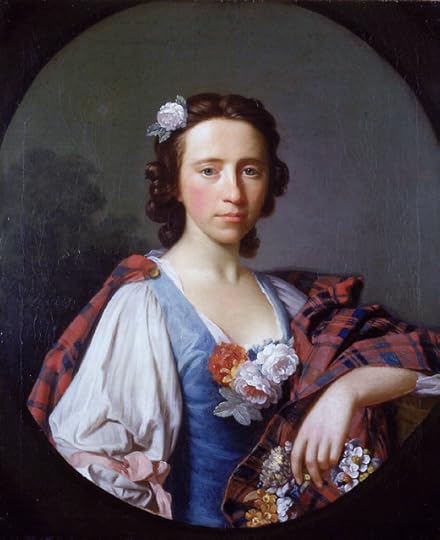
Flora MacDonald
(1722 - 1790)
"A woman of soft features, gentle manners, kind soul, and elegant presence.....a name that will be mentioned in history,and if courage and fidelity be virtues, mentioned with honour."Dr. Johnson
In Scotland's rich history, Flora MacDonald is revered and remembered to this day as a Jacobite heroine. When Flora was a child, her father died. Back then, bride kidnapping was common, and her mother was soon abducted and married by a man named Hugh MacDonald from Armadaleon the Isle of Skye. In 1746, Flora was 24 years old and the Jacobite Risings was in full swing. After the Battle of Culloden, Bonnie Prince Charlie took refuge on the island of Benbecula where Flora was residing at the time.
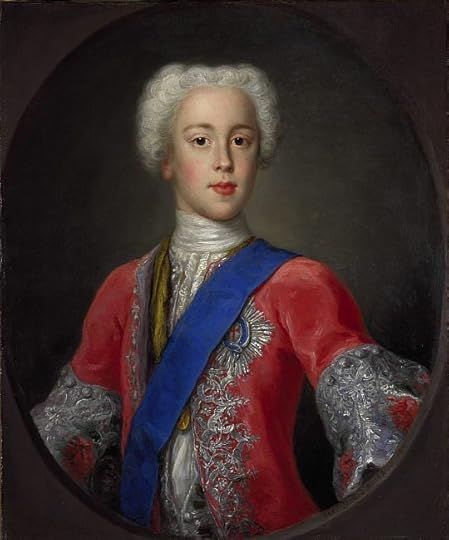
Charles Edward Stuart(Bonnie Prince Charlie)Known as the Young PretenderCaptain Conn O'Neill of The Feeva, County Antrim, Prince Charlie's closest friend and confidant asked for her assistance to help the young royal evade capture when he learned her clan was sympathetic to the Jacobite cause. Legend has it that Flora and the Prince fell deeply in love with each other. She was beautiful and he was a dashing lovable rogue. With the help of her stepfather, Hugh MacDonald, who was the commander of the local militia, the charitable Flora agreed to help the handsome prince escape. Her stepfather provided her with a pass to the mainland for her and her entourage which consisted of a manservant, a maid named Betty Burke, and a boat crew that consisted of 6 men. And who was Betty Burke? None other than Bonnie Prince Charlie himself in disguise. Soon, they ended up in a town called Kilbride on the Isle of Skye. The prince hid in rocks while Flora went for help. She arranged for him to be taken to Glam on the island of Raasay. However, while she managed the prince's escape, her boatment's loose tongues brought attention. She was arrested for aiding the prince's escape and transported to London where she was under constant supervision by guards. Her part in the escaped gained Flora great fame and popularity. While she languished in jail, Bonnie Prince Charlie fled to France, eventually moving to Rome. Plagued by alcoholism, he suffered through numerous failed relationships until he died in 1788. Fortunately for Flora, the government passed a new law called the Act of Indemnity, so she was released. Three years later, she married an army captain called Allan MacDonald of Kingsburgh. They settled down on the Isle of Sky where Flora presented her husband with seven children. When her husband;'s father died, the family moved to the family estate at Kingsburgh.
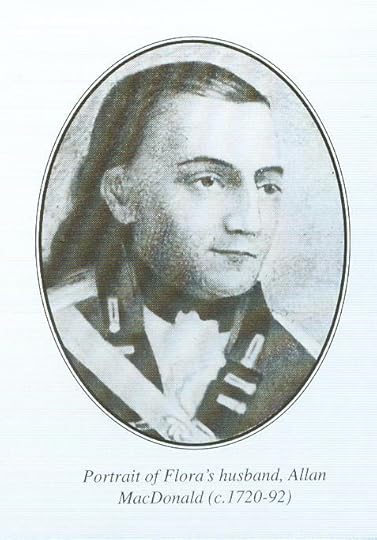
Her husband took the family to North Carolina where he served in the 84th Regiment of Foot for the British Government during the American War of Independence. She encourage and urged the regiment as they headed off to the Battle of Moore's Creek Bridge, only to learn they had faced defeat and her husband had been captured. That's when poor Flora faced numerous hardships. Although she kept a low profile and hid the best she could, American Patriots ravaged her family plantation and stripped them of all their possessions. Meanwhile, her husband had been held prisoner for two years before a prisoner exchange happened and he was sent to Fort Edward in Windsor, Nova Scotia. He sent for Flora and the family was reunited. In 1779 Flora booked passage on a merchant ship in order to go back home to Scotland. During the crossing, a privateer attacked the ship. While the melee was occuring, in order to protect her, she was told to go below deck where she would be safer. She refused and did her part, but suffered a wound in her arm. Upon her return, she visited and stayed with relatives. Several years later, her husband returned and they moved back into the family estate at Kingsburgh. She died at Kingsburgh on the Isle of Skye in 1790, at the age of 68 and was buried in the Kilmuir Cemetery on the Isle of Skye. It is greatly rumored that she asked to be buried wraped in Bonnie Prince Charlie's bed sheet. Author Alan Gold has meticulously researched Flora's life. The story is accurate, lush, and highly compelling. A definite recommendation! Awesome!
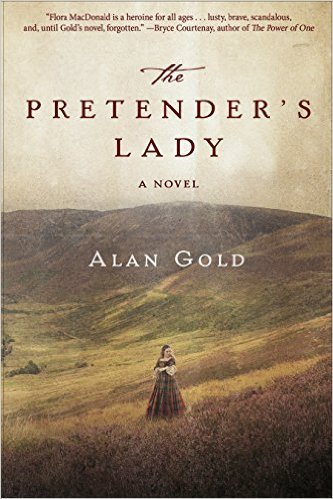 From the author of The Last Testament comes the true love of Bonnie Prince Charlie, her adventures in America and her lasting legacy.
From the author of The Last Testament comes the true love of Bonnie Prince Charlie, her adventures in America and her lasting legacy.In the page-turning popular genre trail-blazed by Antonia Fraser and Phillippa Gregory, The Pretender’s Lady, Alan Gold’s meticulously researched novel, accurately opens history’s pages on a peerless woman who helped change the course of history and whose legend lives on in Scotland today—Flora MacDonald.
She was the most famous Scotswoman of her day, single handedly saving Bonnie Prince Charlie. This is her fictionalized life story—her relations with the Prince, her flight to America, Ben Franklin’s influence, and her return to Britain to lobby for peace
But what’s hidden from history, revealed now for the first time in Gold’s dazzling new work of fiction, is the result of Flora’s and Charlie’s love: a beautiful and talented boy raised on an American farm. But only she knows his true heritage and his claim to the world’s greatest throne. And only the genius of Ben Franklin understands how to use this naïve boy to change the history of America.
Amazon USA Amazon Canada Amazon Canada Amazon UK










Published on July 24, 2015 13:17
The Curiosity Keeper by Sarah E. Ladd
"Camille Iverness met the big man's gaze. Bravely. Boldly. She would not be bullied or manipulated. Not in her own shop." Opening paragraph.
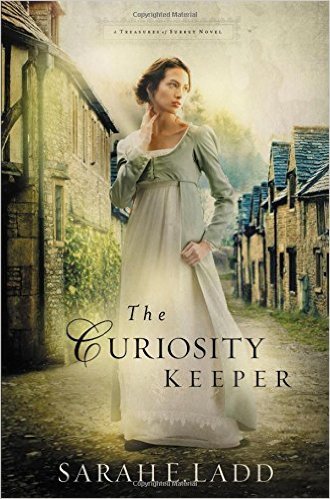 Synopsis: “It is not just a ruby, as you say. It is large as a quail’s egg, still untouched and unpolished. And it is rumored to either bless or curse whoever possesses it.”Camille Iverness can take care of herself. She’s done so since the day her mother abandoned the family and left Camille to run their shabby curiosity shop. But when a violent betrayal leaves her injured with no place to hide, Camille must allow a mysterious stranger to come to her aid.Jonathan Gilchrist never wanted to inherit Kettering Hall. As a second son, he was content to work as the village apothecary. But when his brother’s death made him heir just as his father’s foolish decisions put the estate at risk, only the sale of a priceless possession—a ruby called the Bevoy—can save the family from ruin. But the gem has disappeared. And all trails lead to Iverness Curiosity Shop—and the beautiful shop girl who may be the answer to his many questions.Caught at the intersection of blessings and curses, greed and deceit, these two determined souls must unite to protect what they hold dear. But when a passion that shines far brighter than any gem is ignited, they will have to decide how much they are willing to risk for their future, love, and happiness.
Synopsis: “It is not just a ruby, as you say. It is large as a quail’s egg, still untouched and unpolished. And it is rumored to either bless or curse whoever possesses it.”Camille Iverness can take care of herself. She’s done so since the day her mother abandoned the family and left Camille to run their shabby curiosity shop. But when a violent betrayal leaves her injured with no place to hide, Camille must allow a mysterious stranger to come to her aid.Jonathan Gilchrist never wanted to inherit Kettering Hall. As a second son, he was content to work as the village apothecary. But when his brother’s death made him heir just as his father’s foolish decisions put the estate at risk, only the sale of a priceless possession—a ruby called the Bevoy—can save the family from ruin. But the gem has disappeared. And all trails lead to Iverness Curiosity Shop—and the beautiful shop girl who may be the answer to his many questions.Caught at the intersection of blessings and curses, greed and deceit, these two determined souls must unite to protect what they hold dear. But when a passion that shines far brighter than any gem is ignited, they will have to decide how much they are willing to risk for their future, love, and happiness.
Review by Mirella Patzer
Also visit History and Women
Author Sarah Ladd mixes mystery with a sweet Regency romance in this fascinating story about a young woman who owns a curiosity shop. The book is filled with interesting characters, several of which have a strong interest in collecting old antiquities or curiosities. At the heart of the plot is a mysterious stolen ruby. Theft, robbery, a stabbing, a plague of Scarlet fever, a magnificent mansion, and compelling protaganists and antagonists made for an excellent read. This is definitely a book for women with a stunning cover and intricate plot. A lovely romantic cozy mystery set in the popular Regency era. A nice easy read!
Thank you to the author and publisher. I received a free copy of this book in exchange for an honest review.
Amazon USA Amazon Canada Amazon UK










 Synopsis: “It is not just a ruby, as you say. It is large as a quail’s egg, still untouched and unpolished. And it is rumored to either bless or curse whoever possesses it.”Camille Iverness can take care of herself. She’s done so since the day her mother abandoned the family and left Camille to run their shabby curiosity shop. But when a violent betrayal leaves her injured with no place to hide, Camille must allow a mysterious stranger to come to her aid.Jonathan Gilchrist never wanted to inherit Kettering Hall. As a second son, he was content to work as the village apothecary. But when his brother’s death made him heir just as his father’s foolish decisions put the estate at risk, only the sale of a priceless possession—a ruby called the Bevoy—can save the family from ruin. But the gem has disappeared. And all trails lead to Iverness Curiosity Shop—and the beautiful shop girl who may be the answer to his many questions.Caught at the intersection of blessings and curses, greed and deceit, these two determined souls must unite to protect what they hold dear. But when a passion that shines far brighter than any gem is ignited, they will have to decide how much they are willing to risk for their future, love, and happiness.
Synopsis: “It is not just a ruby, as you say. It is large as a quail’s egg, still untouched and unpolished. And it is rumored to either bless or curse whoever possesses it.”Camille Iverness can take care of herself. She’s done so since the day her mother abandoned the family and left Camille to run their shabby curiosity shop. But when a violent betrayal leaves her injured with no place to hide, Camille must allow a mysterious stranger to come to her aid.Jonathan Gilchrist never wanted to inherit Kettering Hall. As a second son, he was content to work as the village apothecary. But when his brother’s death made him heir just as his father’s foolish decisions put the estate at risk, only the sale of a priceless possession—a ruby called the Bevoy—can save the family from ruin. But the gem has disappeared. And all trails lead to Iverness Curiosity Shop—and the beautiful shop girl who may be the answer to his many questions.Caught at the intersection of blessings and curses, greed and deceit, these two determined souls must unite to protect what they hold dear. But when a passion that shines far brighter than any gem is ignited, they will have to decide how much they are willing to risk for their future, love, and happiness.
Review by Mirella Patzer
Also visit History and Women
Author Sarah Ladd mixes mystery with a sweet Regency romance in this fascinating story about a young woman who owns a curiosity shop. The book is filled with interesting characters, several of which have a strong interest in collecting old antiquities or curiosities. At the heart of the plot is a mysterious stolen ruby. Theft, robbery, a stabbing, a plague of Scarlet fever, a magnificent mansion, and compelling protaganists and antagonists made for an excellent read. This is definitely a book for women with a stunning cover and intricate plot. A lovely romantic cozy mystery set in the popular Regency era. A nice easy read!
Thank you to the author and publisher. I received a free copy of this book in exchange for an honest review.
Amazon USA Amazon Canada Amazon UK










Published on July 24, 2015 08:00
July 9, 2015
Andrew Joyce and why he wrote about Molly Lee
I'm always on the look out for fascinating new authors. Recently I met Andrew Joyce and his novel, Molly Lee intrigues me. Andrew joins us today to tell us a bit more about himself and his writing, and to give us some insight on MOLLY LEE, which is on my to be reviewed list. Welcome Andrew!

My name is Andrew Joyce, and I write books for a living. I have a new book out entitled MOLLY LEE and it’s averaging 4.9 stars on Amazon and Goodreads with sixty-eight total reviews. Here’s a link if you would like to check it out: http://geni.us/molly
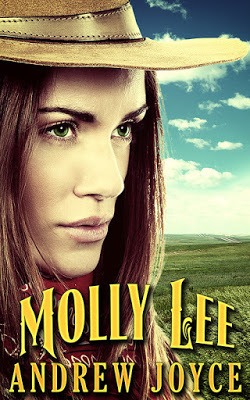
http://geni.us/molly
Amazon USA Amazon Canada Amazon UK
The story is a female-driven account of a young, naive girl’s journey into an independent, strong woman and all the trouble she gets into along the way.
Now you may possibly be asking yourself, What is a guy doing writing in a woman’s voice? And that is a good question. I can only say that I did not start out to write about Molly; she just came to me one day and asked that I tell her story.
Perhaps I should start at the beginning.
My first book was a 164,000-word historical novel. And in the publishing world, anything over 80,000 words for a first-time author is heresy. Or so I was told time and time again when I approached an agent for representation. After two years of research and writing, and a year of trying to secure the services of an agent, I got angry. To be told that my efforts were meaningless was somewhat demoralizing to say the least. I mean, those rejections were coming from people who had never even read my book.
“So you want an 80,000-word novel?” I said to no one in particular, unless you count my dog, because he was the only one around at the time. Consequently, I decided to show them City Slickers that I could write an 80,000-word novel!
I had just finished reading Mark Twain’s Huckleberry Finn for the third time, and I started thinking about what ever happened to those boys, Tom and Huck. They must have grown up, but then what? So I sat down at my computer and banged out REDEMPTION: The Further Adventures of Huck Finn and Tom Sawyer in two months. Then I sent out query letters to agents.
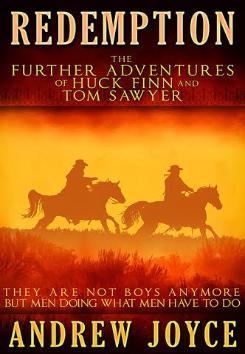
Less than a month later, the chairman of one of the biggest agencies in New York City emailed me that he loved the story. We signed a contract and it was off to the races, or so I thought. But then the real fun began: the serious editing. Seven months later, I gave birth to Huck and Tom as adults. And just for the record, the final word count is 79,914. The book went on to reach #1 status on Amazon twice, and the rest, as they say, is history.
Amazon USA Amazon Canada Amazon UK
But not quite.
My agent then wanted me to write a sequel, but I had other plans. I was in the middle of editing down my first novel (that had been rejected by 1,876,324 agents . . . or so it seemed) from 164,000 words to the present 142,000. However, he was insistent, so I started to think about it. Now, one thing you have to understand is that I tied up all the loose ends at the end of REDEMPTION, so there was no way that I could write a sequel. And that is when Molly asked me to tell her story. Molly was a character that we met briefly in the first chapter of REDEMPTION, and then she is not heard from again.
This is the description for MOLLY LEE :
Molly is about to set off on the adventure of a lifetime . . . of two lifetimes.
It’s 1861 and the Civil War has just started. Molly is an eighteen-year-old girl living on her family’s farm in Virginia when two deserters from the Southern Cause enter her life. One of them—a twenty-four-year-old Huck Finn—ends up saving her virtue, if not her life.
Molly is so enamored with Huck, she wants to run away with him. But Huck has other plans and is gone the next morning before she awakens. Thus starts a sequence of events that leads Molly into adventure after adventure; most of them not so nice.
We follow the travails of Molly Lee, starting when she is eighteen and ending when she is fifty-six. Even then Life has one more surprise in store for her.
As I had wondered whatever became of Huck and Tom, I also wondered what Molly did when she found Huck gone.
I know this has been a long-winded set up, but I felt I had to tell the backstory. Now I can move on and tell you about Molly.
As stated earlier, Molly starts out as a naive young girl. Over time she develops into a strong, independent woman. The change is gradual. Her strengths come from the adversities she encounters along the road that is her life.
With each setback, Molly follows that first rule she set against self-pity and simply moves on to make the best of whatever life throws her way. From working as a whore to owning a saloon, from going to prison to running a ranch, Molly plays to win with the cards she’s dealt. But she always keeps her humanity. She will kill to defend herself and she has no problem killing to protect the weak and preyed upon. However, when a band of Indians (for instance) have been run off their land and have nowhere else to go, Molly allows them to live on her ranch, and in time they become extended family.
PRAISE FOR MOLLY LEE
This is from a review on Amazon:
A young female in nineteenth-century rural America would have needed courage, fortitude, and firm resolve to thrive in the best of circumstances. Molly Lee possesses all of these, along with an iron will and an inherent ability to read people accurately and respond accordingly.
I reckon that about sums up Molly.
I would like to say that I wrote MOLLY LEE in one sitting and everything in it is my pure genius. But that would be a lie. I have three editors (two women and one guy). They kept me honest with regard to Molly. When I made her a little too hard, they would point out that she had to be softer or show more emotion in a particular scene.
I set out to write a book where every chapter ended with a cliffhanger. I wanted the reader to be forced to turn to the next chapter. And I pretty much accomplished that, but I also wrote a few chapters where Molly and my readers could catch their collective breath.
One last thing: Everything in MOLLY LEE is historically correct from the languages of the Indians to the descriptions of the way people dressed, spoke, and lived. I spend as much time on research as I do in writing my stories. Sometimes more.
Here is a 1200 word excerpt from MOLLY LEE :
That’s the way things stood for the next month. Business increased a little, partly due to my promoting myself as The Spicy Lady and partly because the snows had come. The miners could not work and had to stay with their claims throughout the winter or someone would take them over. I heard that the previous year, a few miners had left for the winter and when they returned, someone was sitting on their claims. It led to a little gunplay resulting in the one getting to his gun first ending up with the mine. With the miners not mining, there was nothing for them to do but go to a saloon and warm their insides with whiskey and their outsides with one of the whores.
I had made no progress with John Stone. He was always polite enough, but that’s as far as it went. It was on a Tuesday night—not that the day of the week matters—that I finally worked up the courage to make a play for him. As usual, he was sitting in his chair watching the room. Over the last few weeks, there had been a few minor altercations, but John always kept things peaceful. Sometimes it took a blunt knock to someone’s head with the stock of his shotgun, other times he had to point the ten gauge in someone’s face. Both methods seemed to work equally well.
I walked over to John and with a nod to the shotgun resting on his lap, I asked, “Won’t you hurt innocent people if you ever have to discharge that thing?”
He didn’t say anything for a minute or so, then he let fly with a stream of tobacco juice out of the side of his mouth, and I’ll be damned if he didn’t hit the spittoon sitting next to his chair dead center. Without taking his eyes from the room, he answered me. “It’s just for show. If you point a ten gauge at a man, most of the time he’ll do what you say. If I ever have to shoot somebody, I'll use this.” He then touched the Colt Dragoon holstered on his hip.
I had just asked him if I could buy him a drink at the end of his shift when a ruckus broke out over at the faro table. I turned around to see what all the commotion was about and saw a man holding a revolver on Chan Harris. “You’ve been cheating me all night. I’ve lost my poke to your double-dealin’ ways, and now I want it back!”
Chan shrugged and started to count out some gold coins. After all, it wasn’t his money, it was mine. He’d give the man his money back and let me worry about it. Smart thinking on his part. But he wasn’t counting fast enough to suit the man holding the gun. The shot, when it came, made all those within the room jump. All, that is, except John Stone.
Chan started to fall to the floor while the other two men at the table dove for cover, as did everybody else in the room except John and me. Before Chan hit the floor, John had the Colt out of its leather, and from his hip put a bullet into the gunman’s heart. Of course, it entered from the back, but no one was complaining, least of all the dead man bleeding onto my floor with two twenty-dollar gold pieces clutched in his left hand.
After the smoked cleared, John said, “I reckon I could use a whiskey after work.”
I ran over to where Chan lay and knelt down to see what I could do to help him, but he was already dead.
The place cleared out fast. A few men stayed and formed a circle around Chan and me. Still kneeling next to him, I looked up into their hard faces. I saw nothing. To them, death on a Tuesday night was just another night out on the town. Maybe a shooting added a little excitement, unless you were the one shot.
I had seen dead men before. There were those two Yankees back at the farm and George Anderson in St. Louis. Mister Fellows died in my arms. I wore his blood on my shirt until the shirt was taken away from me by Crow Mother. I don’t know why, but Chan’s death affected me more than the others had. Maybe because after finding the gold and buying The Spicy Lady, I thought my life would calm down some. Now here I was kneeling over another dead man. A man I didn’t even know that well. But he worked for me, and I thought I should have done better by him. He should not have died making money for me.
I stood up and wanted to tell those still present to leave, but the words would not come. I started trembling and was about to scream when I felt a strong, hard arm around my shoulder and heard a voice, a surprisingly gentle voice considering who it came from, say, “You boys best be getting on; we’ll be closing early tonight.” No one ever argued with John Stone. They all filed out into the cold night.
John took over. When the saloon was empty except for those that worked there, he told Mike and Dave to carry Chan into the back room and lay him out. He ordered me to go to the bar and have Abe pour me a glass of rye.
John was standing over the man he had just killed. I didn’t know what he was thinking and at that point I didn’t care. I was supposed to be a hard woman, but here I was going to pieces. If we hadn’t been snowed in, I would have gotten on my horse that very minute and headed back to Virginia to be held in my mother’s arms.
We didn’t have any law in town. There was no marshal or sheriff. We didn’t even have a mayor. When Mike and Dave came back from laying out Chan, John told them to pick up the other man and throw him out onto the street. “Then go to Chan’s digs and see if there are letters or something to tell us if he had any next of kin. After that, go home.”
He directed Abe and Gus to leave by the back door and lock up as usual. As I’ve said, no one ever argued with John Stone. They all did as instructed.
John got the place closed up and came over to where I sat. He was holding the cash box. “You want to put this in the safe before you go upstairs?”
I looked up at him and started to laugh. I was getting hysterical. John nodded and went into my office. When he returned he said, “I put it on your desk; it’ll be safe enough.” He held out his hand and I took it. He pulled me to my feet and without saying a word, he walked me upstairs.
That night John Stone held me as I cried for Chan Harris . . . and maybe a little for myself.
Well, that’s Molly. I hope I’ve piqued your interest enough to go out and buy my book. If not, I’ll come over and wash your car or maybe even cut your lawn if you’ll click on this link and buy it.
http://geni.us/molly
Thank you, Mirella, for having me over. It’s been a pleasure.
Andrew Joyce











My name is Andrew Joyce, and I write books for a living. I have a new book out entitled MOLLY LEE and it’s averaging 4.9 stars on Amazon and Goodreads with sixty-eight total reviews. Here’s a link if you would like to check it out: http://geni.us/molly

http://geni.us/molly
Amazon USA Amazon Canada Amazon UK
The story is a female-driven account of a young, naive girl’s journey into an independent, strong woman and all the trouble she gets into along the way.
Now you may possibly be asking yourself, What is a guy doing writing in a woman’s voice? And that is a good question. I can only say that I did not start out to write about Molly; she just came to me one day and asked that I tell her story.
Perhaps I should start at the beginning.
My first book was a 164,000-word historical novel. And in the publishing world, anything over 80,000 words for a first-time author is heresy. Or so I was told time and time again when I approached an agent for representation. After two years of research and writing, and a year of trying to secure the services of an agent, I got angry. To be told that my efforts were meaningless was somewhat demoralizing to say the least. I mean, those rejections were coming from people who had never even read my book.
“So you want an 80,000-word novel?” I said to no one in particular, unless you count my dog, because he was the only one around at the time. Consequently, I decided to show them City Slickers that I could write an 80,000-word novel!
I had just finished reading Mark Twain’s Huckleberry Finn for the third time, and I started thinking about what ever happened to those boys, Tom and Huck. They must have grown up, but then what? So I sat down at my computer and banged out REDEMPTION: The Further Adventures of Huck Finn and Tom Sawyer in two months. Then I sent out query letters to agents.

Less than a month later, the chairman of one of the biggest agencies in New York City emailed me that he loved the story. We signed a contract and it was off to the races, or so I thought. But then the real fun began: the serious editing. Seven months later, I gave birth to Huck and Tom as adults. And just for the record, the final word count is 79,914. The book went on to reach #1 status on Amazon twice, and the rest, as they say, is history.
Amazon USA Amazon Canada Amazon UK
But not quite.
My agent then wanted me to write a sequel, but I had other plans. I was in the middle of editing down my first novel (that had been rejected by 1,876,324 agents . . . or so it seemed) from 164,000 words to the present 142,000. However, he was insistent, so I started to think about it. Now, one thing you have to understand is that I tied up all the loose ends at the end of REDEMPTION, so there was no way that I could write a sequel. And that is when Molly asked me to tell her story. Molly was a character that we met briefly in the first chapter of REDEMPTION, and then she is not heard from again.
This is the description for MOLLY LEE :
Molly is about to set off on the adventure of a lifetime . . . of two lifetimes.
It’s 1861 and the Civil War has just started. Molly is an eighteen-year-old girl living on her family’s farm in Virginia when two deserters from the Southern Cause enter her life. One of them—a twenty-four-year-old Huck Finn—ends up saving her virtue, if not her life.
Molly is so enamored with Huck, she wants to run away with him. But Huck has other plans and is gone the next morning before she awakens. Thus starts a sequence of events that leads Molly into adventure after adventure; most of them not so nice.
We follow the travails of Molly Lee, starting when she is eighteen and ending when she is fifty-six. Even then Life has one more surprise in store for her.
As I had wondered whatever became of Huck and Tom, I also wondered what Molly did when she found Huck gone.
I know this has been a long-winded set up, but I felt I had to tell the backstory. Now I can move on and tell you about Molly.
As stated earlier, Molly starts out as a naive young girl. Over time she develops into a strong, independent woman. The change is gradual. Her strengths come from the adversities she encounters along the road that is her life.
With each setback, Molly follows that first rule she set against self-pity and simply moves on to make the best of whatever life throws her way. From working as a whore to owning a saloon, from going to prison to running a ranch, Molly plays to win with the cards she’s dealt. But she always keeps her humanity. She will kill to defend herself and she has no problem killing to protect the weak and preyed upon. However, when a band of Indians (for instance) have been run off their land and have nowhere else to go, Molly allows them to live on her ranch, and in time they become extended family.
PRAISE FOR MOLLY LEE
This is from a review on Amazon:
A young female in nineteenth-century rural America would have needed courage, fortitude, and firm resolve to thrive in the best of circumstances. Molly Lee possesses all of these, along with an iron will and an inherent ability to read people accurately and respond accordingly.
I reckon that about sums up Molly.
I would like to say that I wrote MOLLY LEE in one sitting and everything in it is my pure genius. But that would be a lie. I have three editors (two women and one guy). They kept me honest with regard to Molly. When I made her a little too hard, they would point out that she had to be softer or show more emotion in a particular scene.
I set out to write a book where every chapter ended with a cliffhanger. I wanted the reader to be forced to turn to the next chapter. And I pretty much accomplished that, but I also wrote a few chapters where Molly and my readers could catch their collective breath.
One last thing: Everything in MOLLY LEE is historically correct from the languages of the Indians to the descriptions of the way people dressed, spoke, and lived. I spend as much time on research as I do in writing my stories. Sometimes more.
Here is a 1200 word excerpt from MOLLY LEE :
That’s the way things stood for the next month. Business increased a little, partly due to my promoting myself as The Spicy Lady and partly because the snows had come. The miners could not work and had to stay with their claims throughout the winter or someone would take them over. I heard that the previous year, a few miners had left for the winter and when they returned, someone was sitting on their claims. It led to a little gunplay resulting in the one getting to his gun first ending up with the mine. With the miners not mining, there was nothing for them to do but go to a saloon and warm their insides with whiskey and their outsides with one of the whores.
I had made no progress with John Stone. He was always polite enough, but that’s as far as it went. It was on a Tuesday night—not that the day of the week matters—that I finally worked up the courage to make a play for him. As usual, he was sitting in his chair watching the room. Over the last few weeks, there had been a few minor altercations, but John always kept things peaceful. Sometimes it took a blunt knock to someone’s head with the stock of his shotgun, other times he had to point the ten gauge in someone’s face. Both methods seemed to work equally well.
I walked over to John and with a nod to the shotgun resting on his lap, I asked, “Won’t you hurt innocent people if you ever have to discharge that thing?”
He didn’t say anything for a minute or so, then he let fly with a stream of tobacco juice out of the side of his mouth, and I’ll be damned if he didn’t hit the spittoon sitting next to his chair dead center. Without taking his eyes from the room, he answered me. “It’s just for show. If you point a ten gauge at a man, most of the time he’ll do what you say. If I ever have to shoot somebody, I'll use this.” He then touched the Colt Dragoon holstered on his hip.
I had just asked him if I could buy him a drink at the end of his shift when a ruckus broke out over at the faro table. I turned around to see what all the commotion was about and saw a man holding a revolver on Chan Harris. “You’ve been cheating me all night. I’ve lost my poke to your double-dealin’ ways, and now I want it back!”
Chan shrugged and started to count out some gold coins. After all, it wasn’t his money, it was mine. He’d give the man his money back and let me worry about it. Smart thinking on his part. But he wasn’t counting fast enough to suit the man holding the gun. The shot, when it came, made all those within the room jump. All, that is, except John Stone.
Chan started to fall to the floor while the other two men at the table dove for cover, as did everybody else in the room except John and me. Before Chan hit the floor, John had the Colt out of its leather, and from his hip put a bullet into the gunman’s heart. Of course, it entered from the back, but no one was complaining, least of all the dead man bleeding onto my floor with two twenty-dollar gold pieces clutched in his left hand.
After the smoked cleared, John said, “I reckon I could use a whiskey after work.”
I ran over to where Chan lay and knelt down to see what I could do to help him, but he was already dead.
The place cleared out fast. A few men stayed and formed a circle around Chan and me. Still kneeling next to him, I looked up into their hard faces. I saw nothing. To them, death on a Tuesday night was just another night out on the town. Maybe a shooting added a little excitement, unless you were the one shot.
I had seen dead men before. There were those two Yankees back at the farm and George Anderson in St. Louis. Mister Fellows died in my arms. I wore his blood on my shirt until the shirt was taken away from me by Crow Mother. I don’t know why, but Chan’s death affected me more than the others had. Maybe because after finding the gold and buying The Spicy Lady, I thought my life would calm down some. Now here I was kneeling over another dead man. A man I didn’t even know that well. But he worked for me, and I thought I should have done better by him. He should not have died making money for me.
I stood up and wanted to tell those still present to leave, but the words would not come. I started trembling and was about to scream when I felt a strong, hard arm around my shoulder and heard a voice, a surprisingly gentle voice considering who it came from, say, “You boys best be getting on; we’ll be closing early tonight.” No one ever argued with John Stone. They all filed out into the cold night.
John took over. When the saloon was empty except for those that worked there, he told Mike and Dave to carry Chan into the back room and lay him out. He ordered me to go to the bar and have Abe pour me a glass of rye.
John was standing over the man he had just killed. I didn’t know what he was thinking and at that point I didn’t care. I was supposed to be a hard woman, but here I was going to pieces. If we hadn’t been snowed in, I would have gotten on my horse that very minute and headed back to Virginia to be held in my mother’s arms.
We didn’t have any law in town. There was no marshal or sheriff. We didn’t even have a mayor. When Mike and Dave came back from laying out Chan, John told them to pick up the other man and throw him out onto the street. “Then go to Chan’s digs and see if there are letters or something to tell us if he had any next of kin. After that, go home.”
He directed Abe and Gus to leave by the back door and lock up as usual. As I’ve said, no one ever argued with John Stone. They all did as instructed.
John got the place closed up and came over to where I sat. He was holding the cash box. “You want to put this in the safe before you go upstairs?”
I looked up at him and started to laugh. I was getting hysterical. John nodded and went into my office. When he returned he said, “I put it on your desk; it’ll be safe enough.” He held out his hand and I took it. He pulled me to my feet and without saying a word, he walked me upstairs.
That night John Stone held me as I cried for Chan Harris . . . and maybe a little for myself.
Well, that’s Molly. I hope I’ve piqued your interest enough to go out and buy my book. If not, I’ll come over and wash your car or maybe even cut your lawn if you’ll click on this link and buy it.
http://geni.us/molly
Thank you, Mirella, for having me over. It’s been a pleasure.
Andrew Joyce










Published on July 09, 2015 12:11

